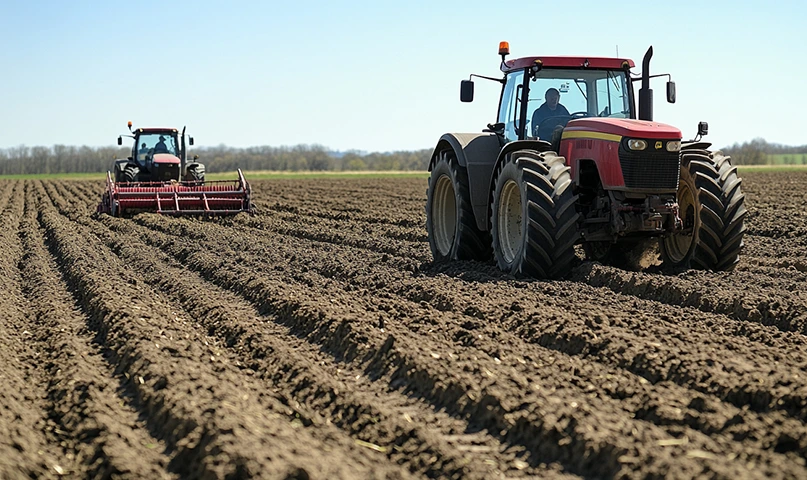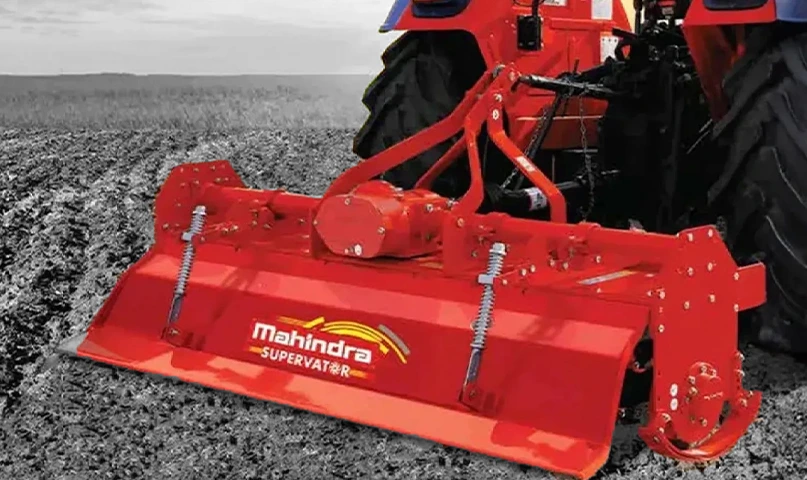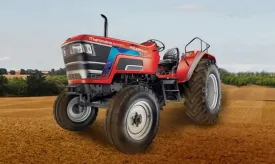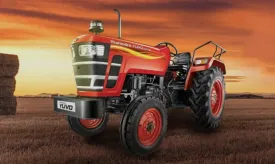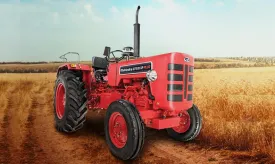Essential tractor safety inspection checklist: what to check before every use

Tractors are among the most vital pieces of equipment on a farm, helping with a variety of tasks, from ploughing and tilling to hauling and planting. However, the powerful nature of tractors also makes them potentially dangerous if not properly maintained. Regular safety inspections before each use are essential to ensure that your tractor operates safely and efficiently, reducing the risk of accidents or costly repairs.
In this blog, we will guide you through an essential tractor safety inspection checklist—a must-have routine that will help ensure your tractor is in optimal working condition before each use.
1. Engine and Fluid Levels
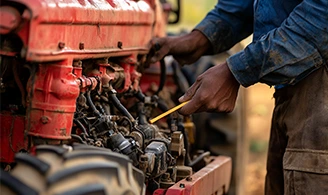
The engine is the heart of your tractor, so ensuring that it's in good condition is the first step in any safety inspection.
- Engine oil: Check the engine oil level using the dipstick. Ensure it's within the recommended range and look for any signs of contamination (milky oil or a burnt smell). Low oil levels or dirty oil can cause engine damage.
- Coolant: Inspect the coolant level in the radiator or coolant reservoir. If the coolant is low, top it up with the recommended type of coolant. Overheating is a major risk for tractors, especially in hot weather.
- Fuel: Ensure you have enough fuel for your work. Also, inspect for any fuel leaks or signs of deterioration in fuel lines or tanks.
- Hydraulic fluid: Check the hydraulic fluid reservoir for proper levels. Low hydraulic fluid can affect the performance of attachments and cause damage to the hydraulic system.
2. Tires and wheels
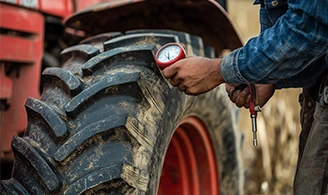
Proper tire maintenance ensures not only safety but also the tractor's efficiency. Improper tire pressure or damage can affect stability, traction, and fuel efficiency.
- Tire pressure: Check the tire pressure to ensure it meets the manufacturer's specifications. Under-inflated or over-inflated tires can lead to poor traction, increased wear, and handling issues.
- Tire condition: Inspect each tire for signs of wear, cuts, punctures, or bulges. Check the tread depth and make sure there are no sharp objects lodged in the tires that could cause damage.
- Wheel nuts: Check that the wheel nuts are tight. Loose wheel nuts can cause wheels to become unstable and potentially detach.
3. Braking system
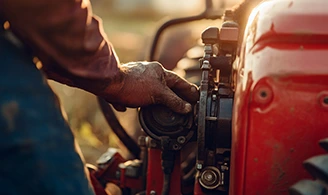
Your tractor's braking system is crucial for stopping the machine safely, especially when working on slopes or uneven terrain.
- Brake fluid: Check the brake fluid level to ensure it's within the recommended range. Low brake fluid can reduce braking performance.
- Brake pedal: Test the brake pedal to ensure it is responsive and has proper tension. A spongy or unresponsive brake pedal could indicate air in the brake lines or low brake fluid.
- Brakes and brake pads: Inspect the brake pads and discs for wear. If you notice any issues such as unusual noises or reduced braking effectiveness, it may be time to replace them.
4. Lights and electrical system
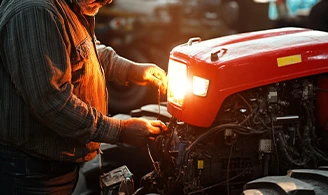
Tractors often operate in low-light conditions, early mornings, or late evenings. Properly functioning lights and electrical components are vital for your safety and visibility.
- Headlights and taillights: Ensure both the headlights and taillights are functioning properly. Replace any burnt-out bulbs, as visibility is crucial when working in the dark or during poor weather conditions.
- Indicators and flashers: Test the turn signals and emergency flashers. These are vital for signaling to others when you're turning or stopped on the field.
- Battery: Check the battery terminals for corrosion or loose connections. Make sure the battery is holding a charge and is free from dirt and debris.
5. Power Take-Off (PTO) and attachments
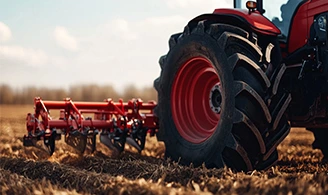
The PTO shaft connects your tractor to various implements and tools, such as mowers, ploughs, and tillers. Proper inspection of the PTO and attachments is crucial for both functionality and safety.
- PTO guard: Ensure the PTO shaft is covered with a guard to prevent accidental contact. A damaged or missing PTO guard can cause serious injuries.
- PTO connection: Inspect the PTO connection for any signs of wear and ensure that it's securely attached and properly aligned.
- Attachments: Check that any attachments (e.g., ploughs, harrows) are securely connected to the tractor. Ensure they are in good condition and operate smoothly. Look for any wear or damage that might affect their performance.
6. Steering and controls
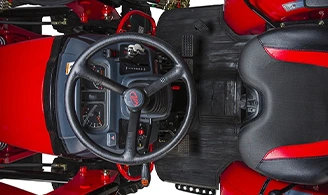
Your tractor's steering and controls need to be in perfect working condition for safety and smooth operation.
- Steering wheel: Test the steering wheel for smooth operation. It should turn easily without resistance or unusual noises. If the steering is hard to turn or feels loose, there could be an issue with the steering mechanism.
- Throttle and gear controls: Ensure that the throttle and gear controls are responsive and move smoothly. Sticking controls could indicate issues with the linkage or the system's fluid levels.
- Clutch and pedals: Test the clutch and other pedal systems to make sure they respond properly. A faulty clutch could result in difficulty stopping or controlling the tractor.
7. Exhaust system
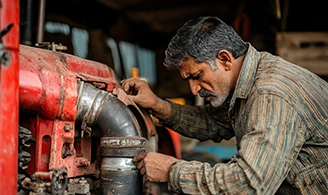
The exhaust system of your tractor is important for maintaining air quality and avoiding carbon monoxide buildup.
- Exhaust leaks: Inspect the exhaust system for any signs of leaks, holes, or cracks. A leaking exhaust can pose a fire hazard and may also damage the engine.
- Muffler: Ensure that the muffler is in place and free of obstructions. A damaged muffler can affect the engine's performance and may also cause excessive noise.
8. Chassis and frame

The overall structure of the tractor should be checked for any signs of damage or wear that could compromise its safety and performance.
- Frame and body: Inspect the tractor's frame for any cracks, dents, or signs of stress. A compromised frame can lead to structural failure during operation.
- Hydraulic hoses and cables: Check all hydraulic hoses and cables for signs of wear or leaks. Look for any signs of fraying, cracking, or rubbing that could lead to sudden failures.
9. Fuel and hydraulic leaks
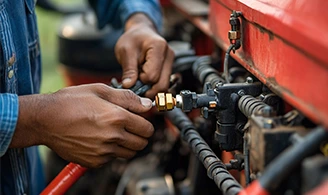
Leaks, whether they're hydraulic fluid, fuel, or oil, can create significant safety hazards, not only by reducing the tractor's performance but also by increasing the risk of fire.
- Fuel leaks: Look for any signs of fuel leakage around the fuel tank, lines, and filter. Fuel leaks are highly hazardous and should be addressed immediately.
- Hydraulic leaks: Check hydraulic lines for leaks, especially around connectors and seals. Hydraulic fluid leaks can cause loss of pressure and affect the operation of implements and attachments.
10. Cleaning and debris removal
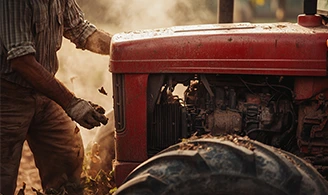
Before starting your tractor, always ensure that it is free of debris that could cause operational issues or fires.
- Clean the tractor: Remove any dirt, mud, or plant material from the tractor's exterior, especially around the engine, exhaust, and hydraulic lines. This prevents debris from causing overheating or blocking air vents.
- Check for buildup around the radiator: Ensure that there is no grass or debris around the radiator that could obstruct airflow and cause the engine to overheat.
Conclusion
Performing a tractor safety inspection before every use is a simple yet vital practice that can save you time, money, and possibly even prevent accidents. A well-maintained tractor operates more efficiently, reduces downtime, and ensures a safer working environment for you and anyone else on the farm. By following this checklist, you can make sure your tractor is always in top condition and ready to handle the tasks at hand. Regular maintenance and inspections are key to prolonging the life of your tractor and maximizing its performance. Stay safe and keep your tractor running smoothly!









